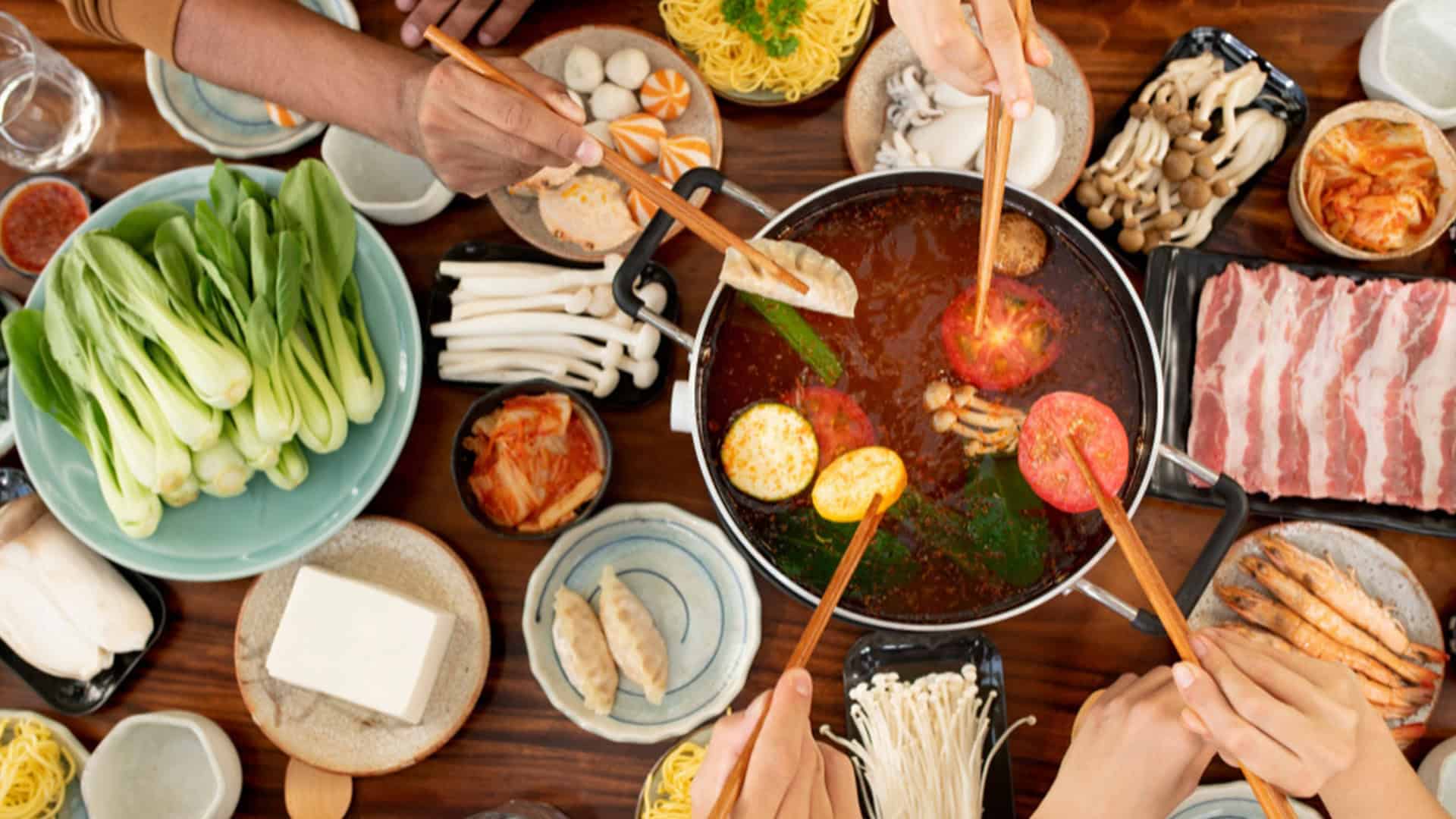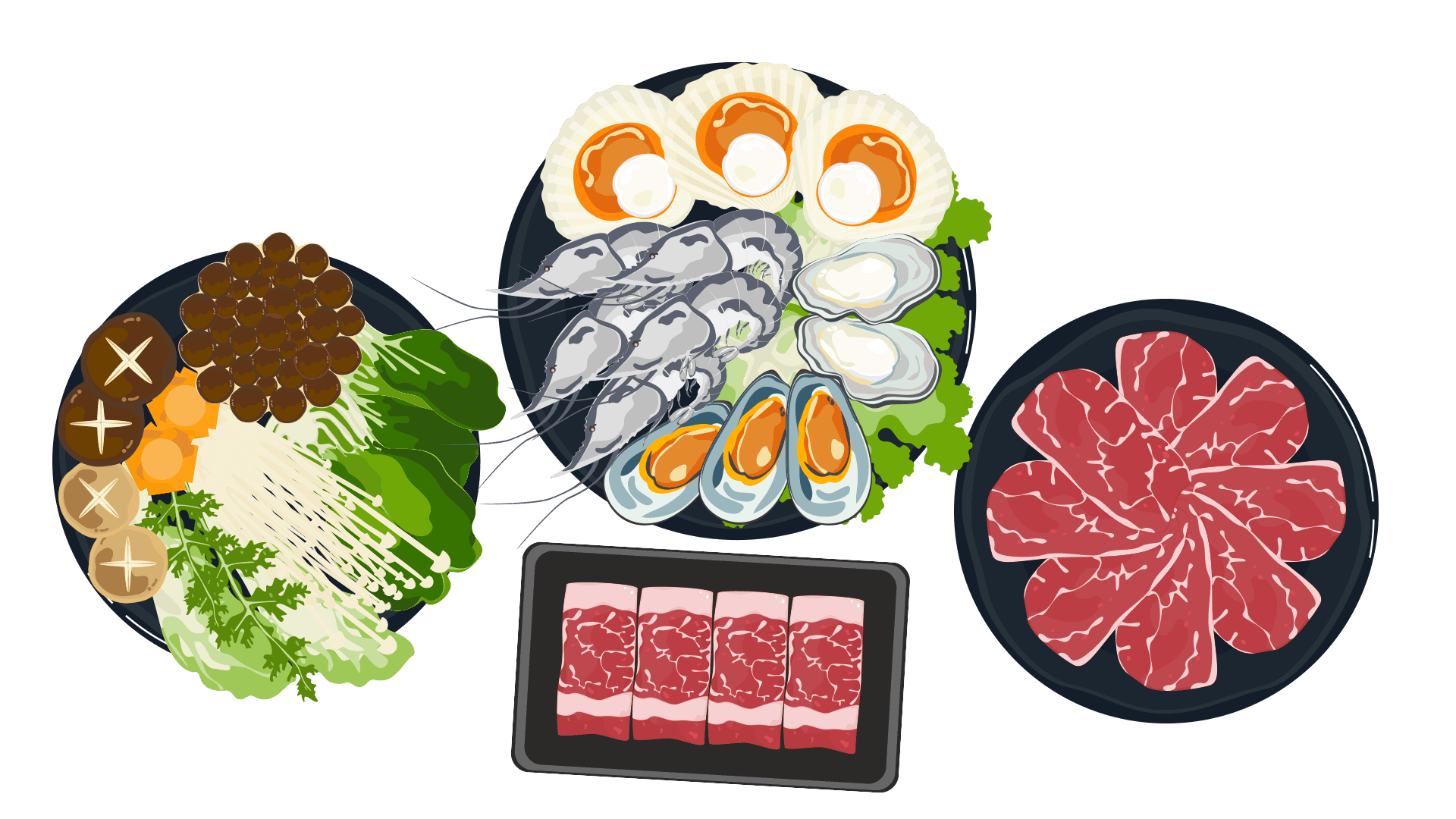Your Guide to a Healthy Chinese New Year Hot Pot

Hotpot holds significant cultural and social importance in Singapore, reflecting the nation’s multi-culturalism and local food culture. It is a quintessential social dining experience, enhancing bonds between friends, family members, and even business associates, especially during Chinese New Year when the abundant ingredients symbolise prosperity and wealth.
However, enjoying hotpot mindfully requires considering a few key factors:
Be mindful of your sodium intake
While the soup base is often considered the “soul” of hotpot, it is also a significant source of sodium, including dipping sauces. A single bowl of hotpot soup can contain at least 2,000mg of sodium, reaching the recommended daily allowance (2,000mg/day). Popular processed foods such as meatballs, fish balls, and crab sticks also contribute to sodium and saturated fat intake.
Dining out: Limit yourself to no more than half a bowl of soup. For dipping sauces, choose fresh herbs like chives, coriander, and chilli with vinegar and light soy sauce (no more than one tablespoon), or oil-based sauces (no more than two teaspoons).
Hotpot at home: Opt for a homemade soup base using fresh ingredients to control sodium and enhance flavour.

Watch out for the fats
Pork belly and beef are usually the crowd’s favourites for hotpot. However, these options are higher in fats as compared to lean meats, seafood, and fish options. Hence, do consider limiting the amount of meats high in fats. Perhaps, you can use a combination of different types and cuts of meats on the table to increase the variation too!
Tips for a healthy hotpot
Choose a healthier broth: Choose clear broths like chicken or vegetable broth instead of creamy or spicy ones, which tend to be higher in fat and sodium.
Load up on vegetables: Include plenty of leafy greens, mushrooms, and other vegetables. They are low in calories and high in nutrients.
Select lean proteins: Choose lean meats like chicken breast, fish, prawns, and tofu over processed meats and fatty cuts.
Control your dipping sauce: Be mindful of sauces, as they can be high in sodium, sugar, and fat. Use small amounts and choose options like fresh herbs instead of creamy or oily sauces.
Cook food thoroughly: Ensure all ingredients, especially meats and seafood, are cooked thoroughly to prevent foodborne illnesses.
Limit processed foods: Reduce the amount of processed foods like fish balls, meatballs, and sausages, which are often high in sodium, saturated fat, and additives.
Drink plenty of water: Stay hydrated by drinking water throughout the meal. This can also help you feel full and prevent overeating.
Practise mindful eating: Eat slowly, savour your food, and pay attention to your hunger cues. Stop eating when you feel satisfied, not stuffed.



